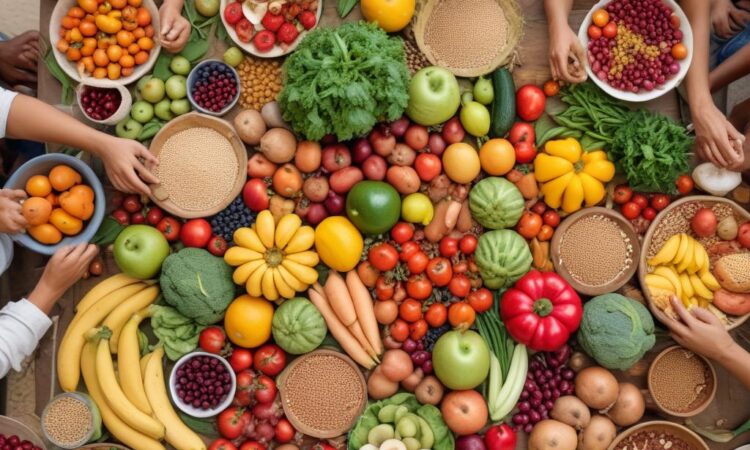Food Security and Nutrition: Global Food Shortages and Rising Food Prices
Global food shortages and rising food prices have intensified concerns about food security and the potential impact on nutritional health, particularly in vulnerable populations. The confluence of factors driving this crisis, including climate change, conflict, and economic instability, has created a complex and multifaceted challenge for governments, international organizations, and communities worldwide.
The Global Food Security Crisis
Food security is defined as the availability of sufficient, safe, and nutritious food for all people at all times. However, this fundamental human right is increasingly under threat. The Food and Agriculture Organization of the United Nations (FAO) estimates that over 828 million people worldwide faced chronic hunger in 2021, while another 2.3 billion people experienced moderate or severe food insecurity. These numbers have been exacerbated by the ongoing conflict in Ukraine, which has disrupted global wheat and fertilizer markets, and the COVID-19 pandemic, which has disrupted supply chains and exacerbated economic hardship.
Climate Change: A Growing Threat to Food Security
Climate change is a major driver of food insecurity. Extreme weather events such as droughts, floods, and heatwaves are becoming more frequent and intense, disrupting agricultural production and impacting crop yields. Rising temperatures and changing precipitation patterns are also altering the suitability of land for certain crops, forcing farmers to adapt their practices or face reduced harvests. The effects of climate change are particularly pronounced in developing countries, where agriculture is often rain-fed and vulnerable to unpredictable weather patterns.
Conflict and Displacement: Disrupting Food Systems
Conflict and displacement are major contributors to food insecurity. Wars and armed conflicts often disrupt agricultural production and food distribution networks, leading to food shortages and price increases. Moreover, displacement of populations due to conflict or natural disasters can disrupt livelihoods and exacerbate food insecurity. The ongoing conflict in Yemen, for example, has led to a severe humanitarian crisis, with millions facing acute food shortages and malnutrition.
Economic Instability: Impacting Food Access
Economic instability and poverty can significantly impact food security. Rising food prices can make it difficult for low-income households to afford adequate food, particularly for families with children. Moreover, economic downturns can lead to job losses and reduced incomes, further exacerbating food insecurity. Global economic shocks, such as the COVID-19 pandemic, can also have a ripple effect on food systems, disrupting supply chains and increasing food prices.
Nutritional Health: The Silent Consequence
Food insecurity has profound consequences for nutritional health, particularly among children and vulnerable populations. Chronic hunger and malnutrition can lead to stunting, wasting, and micronutrient deficiencies, impacting cognitive development, physical growth, and overall health outcomes. In severe cases, malnutrition can increase the risk of death, especially among young children. Food insecurity and poor nutrition are also linked to increased susceptibility to chronic diseases, such as obesity, heart disease, and type 2 diabetes.
Addressing Food Security: A Multifaceted Approach
Addressing the global food security crisis requires a multifaceted approach that involves governments, international organizations, civil society, and the private sector. Key strategies include:
- Investing in sustainable agriculture: Promoting sustainable agricultural practices, such as agroforestry, conservation agriculture, and climate-smart agriculture, can improve resilience to climate change and enhance food production.
- Strengthening food systems: Investing in infrastructure, transportation, and storage facilities can improve food distribution and reduce food losses.
- Promoting access to markets: Supporting farmers and producers with market access, fair prices, and access to credit can boost agricultural production and improve livelihoods.
- Addressing conflict and displacement: Addressing conflict and promoting peace are essential for creating conditions conducive to food security.
- Investing in social safety nets: Providing food assistance and social safety nets can protect vulnerable populations from food insecurity and malnutrition.
- Promoting nutrition-sensitive agriculture: Integrating nutrition considerations into agricultural programs can improve the nutritional value of food produced and enhance dietary diversity.
- Investing in research and development: Investing in research and development of new technologies, crop varieties, and agricultural practices can help address the challenges of climate change and food security.
Conclusion
The global food security crisis is a complex and multifaceted challenge that requires urgent and collaborative action. Addressing the root causes of food insecurity, including climate change, conflict, and economic inequality, is crucial to ensuring that all people have access to sufficient, safe, and nutritious food. Investing in sustainable agriculture, strengthening food systems, promoting access to markets, and supporting vulnerable populations are essential steps towards achieving food security and improving nutritional health for all.

